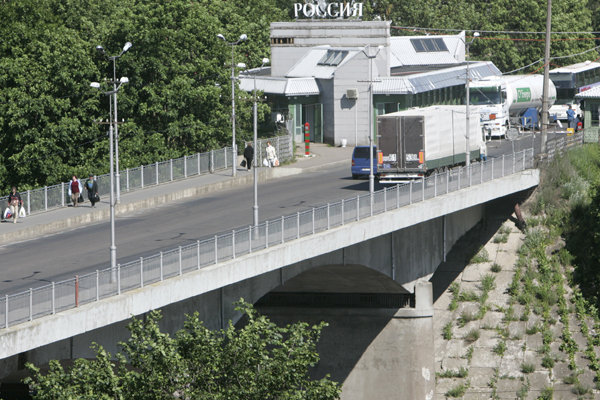
Beyond Two Percent: How Estonia is Strengthening Its Security and NATO’s
Publication: Eurasia Daily Monitor Volume: 14 Issue: 21
By:

Multiple officials in the new United States presidential administration have suggested that not all member countries of the North Atlantic Treaty Organization (NATO) are paying their fair share for the common defense. They proclaim that these government need to devote at least 2 percent of their GDP to defense spending, with the implicit suggestion that they are less than fully committed to the Alliance if they do not—and that, as a result, the Alliance may be less than fully committed to them (Baltic Times, February 16). The 2 percent figure may not be inappropriate, but defense analysts in the US and Europe point out that investment in the security of alliance members is about more than money or even defense spending.
One NATO country that has routinely spent more than two percent of its GDP on defense is Estonia. Yet, it has done more not only because it is a front-line state that borders Russia but because Vladimir Putin has sought to exploit the ethnic Russian minority in Estonia’s northeast and to challenge the West by asking the so-called “sacred question”—“are you prepared to die for Narva?” The Alliance clearly is, but Estonia is making sure that any Russian moves in that direction will reverse the question and force the Kremlin leader to ask himself whether he is “prepared to die” for that Estonian city (Echo Moskvy, April 29, 2014; Kasparov.ru, December 1, 2014).
Ida-Viru County, in Estonia’s northeast, of which Narva is the largest city, has an economy based on shale oil. In the Soviet era, Moscow sent into occupied Estonia thousands of ethnic Russians to work at those Ida-Viru oil fields. Since then, many of these settled Russians have left and others have died. As a result, the total population of Ida-Viru fell from 221,000, in 1990, to 146,000, last year. Despite that—unlike in the other 14 counties of Estonia, where the population is 80 percent or more ethnically Estonian—Ida-Viru’s population remains 72 percent ethnic Russian. Many of these individuals are also non-citizens. Consequently, there has been much speculation in the Russian and Western media, especially in the wake of the Russia’s annexation of Crimea, whether Moscow might seek to exploit the ethnic Russians there as part of a “hybrid” attack on Estonia (see EDM, September 20, 2016).
Estonia has countered this potential threat in three ways, all of which make it ever less likely that Putin would risk such a move.
First, it has developed its own military and security forces (see EDM, January 23, 2017), it has integrated them with those of the North Atlantic Alliance, and it has secured NATO overflights and basing of NATO soldiers on its territory. Together, these military actions are designed to underscore that any Russian move against Estonia would trigger the Alliance’s famous Article V, whereby an attack on a member is an attack on the Alliance as a whole—and would be responded to as such
Second, Estonia has promoted the economic development of its northeast in such a way that ethnic Russians living in Estonia now have a much higher standard of living than do Russian citizens living on the other side of the border. As long as that is the case—and current trends in both Estonia and the Russian Federation give no reason to think that it will change—even those ethnic Russians in Estonia who are dissatisfied with Tallinn for one reason or another will have little willingness to support any Russian move that would leave them poorer and with fewer rights than they have now in a country which is not only a member of NATO but also of the European Union. This economic difference in many ways may be even a greater contribution to Estonia’s security and that of NATO than its soldiers or weapons. (Regnum, Windowoneurasia2.blogspot.com, January 3
And third, Estonia has actively promoted the integration of Ida-Viru Country into Estonian life, an effort that requires changes in attitude not only among ethnic Russians but among ethnic Estonians as well. In a commentary in Eesti Paevaleht last week (February 14), Tartu Professor Mikhail Lotman, the son of the great semiotician Yury Lotman, argues that “overcome[ing] the mental barrier separating Ida-Viru County from the rest of Estonia” is absolutely critical to Estonia’s security (Eesti Paevaleht, February 14).
“The Estonian state must powerfully establish itself across the entirety of its territory,” Lotman says. It has already seen the opening of a branch of the University of Tartu in Narva and now is about to open the Estonian security services academy there, thus symbolically and practically including a region some Estonians still view as alien in the rest of the country. Taking this step sends a powerful message to Estonian nationalists who remain estranged from ethnic Russians.
In his article, Lotman recalls an encounter he had with an Estonian nationalist in Tartu. The latter said he would “never ever go to Narva” as it was “the Russkies’ [sic] city.” The Tartu professor challenged him by pointing out that the nationalist was still demanding that Russia return Estonian lands it seized at the end of World War II. The nationalist failed to understand, Lotman continues, that his position was logically inconsistent because he was “willing at least nominally to fight for what was unattainable but at the same time concede that which belongs to Estonia now” (Eesti Paevaleht, February 14)
Changing such attitudes will have a positive impact on promoting Estonian and NATO security. And efforts to measure them cannot end simply by learning whether Tallinn has made a sufficiently large contribution to its defense budget.



